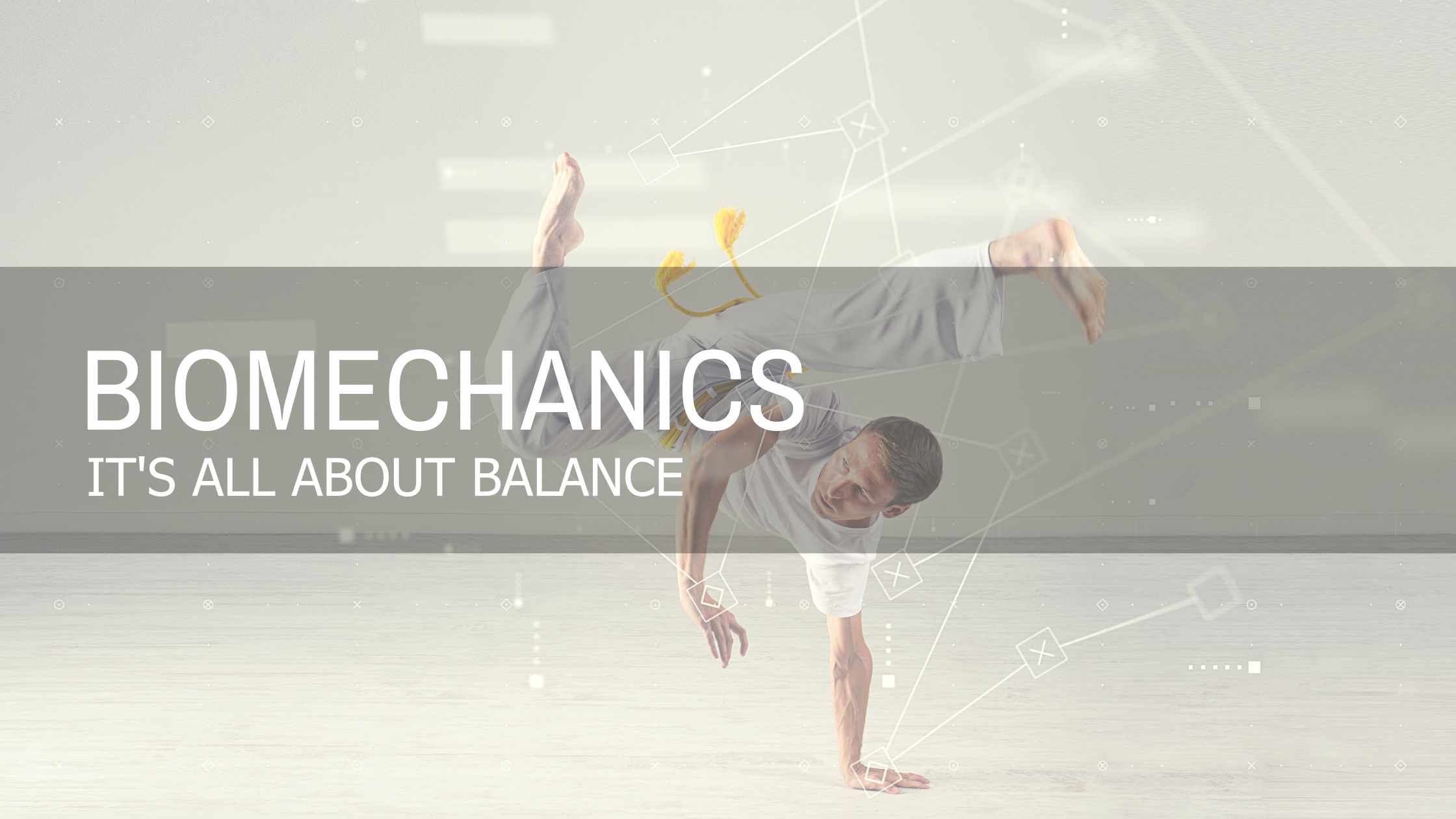
Sep 13 , 2021
0 Comments
Designed to Move | It's All About the Balance
The Beauty of Movement
It’s amazing to think that 650 muscles in the human body all work together in a beautifully symphony of movement. This ability to coordinate movement through multiple joints is referred to as intermuscular coordination. Each joint has a grouping of muscles called a force couple that both serve to stabilize it and to move its adjoining components. The force couple is made up of muscles that close the joint (agonist), muscles that open the joint (antagonist), and muscles that hold the joint in place during movement (stabilizers).
An easy example of this is seen with the elbow. The bicep muscle (agonist) closes or flexes the elbow while the tricep muscle (antagonist) flexes to extend or open the elbow. The rotator cuff muscles stabilize the shoulder joint as well as the upper bone of the arm (humerus) so that movement can occur in the first place.
Efficiency
The ability of these force couples to efficiently coordinate movement without creating misalignment of the joint or without creating dysfunctional movement patterns is called neuromuscular efficiency. There is a natural balance in the tone and strength in the opposing sets of muscles. Each muscle group has an opposite muscle group that keeps it in check. When the antagonist flexes the antagonist releases in a natural length relationship that allows for the proper execution of movement.
The Problem
When the muscles of the force couple don’t have the natural strength and stretch relationship this can lead to altered joint mechanics and dysfunctional movement. This occurs for several reasons including bad posture, completing the same movement excessively, prior injury that was never fully rehabilitated or neurological disorders.
This creates a feed forward system of dysfunction leading to a collective breakdown in movement across the body. That’s why an unaddressed ankle sprain when you were twelve is now surfacing as shoulder pain in your thirties. This cumulative injury cycle affects the metabolism, nervous system and musculoskeletal systems.
While the elbow provides a simplified example of how force couples work, what about more complicated areas like the spine? Spinal Stability
Back Extension
In back extension (arching the back) the muscles that extend the back are the agonists (erector spinae, quadratus lumborum, multifidus). You use these muscles to extend the spine or bend it backwards. These muscles run parallel along the length of the spine from the pelvis all the way up to the base of the skull.
Back Flexion
The muscles that flex the back (bow the back) are the antagonists (transverse abdominus, rectus abdominus, obliques). These muscles run opposite to the back extensor muscles and act to bring the spine forward. Most of us are familiar with the “six pack” abdominal muscle called the rectus abdominus. This is what most people try to train to develop a toned midsection.
Balance
These complementary groups of muscles are important because they help to maintain the stability of the spine and pelvis. To keep your spine healthy and stable there must be balance in these groups.
The problem arises when balance is not met. We are a nation of folks who all have a tendency to lean backwards. This forces the pelvis to tuck under pushing the thigh bones (femurs) forward from under the hips. This compresses the lower spine creating increased use of the spinal extensor muscles while lengthening the spinal flexors. This leads to compressive forces on the spine and lower back pain.
How Does This Happen?
The front and the back of the body are meant to be equal in length. Relatively speaking the distance between the top of your pelvis and the bottom of your rib cage should be the same. When you complete activities that change this natural spacing, this can alter the force couple relationship responsible for providing the stability of the spine.
Overused hip flexors (the ones that bring your hip bone up towards your chest) also contribute to this tucked under pelvis. People who like to bicycle or run for exercise tend to overuse these muscles. Overtraining the quads and back extensor muscles from engaging in activities like these can lead to altered force couple relationships and a decrease in neuromuscular efficiency.
Also, overtraining just one set of the abdominals (spinal flexors) without considering the entire set can lead to distortions. An example of this is seen in those who focus only on crunching movements that target the rectus abdominus (six pack muscles) without learning how to engage the deeper abdominal muscles the obliques and transverse abdominis.
Yes, There is a Solution!
- Increasing the mobility of the back extensor muscles (erector spinae).
- Recognize which muscles are responsible for spinal flexion and strengthen them. (transverse abdominis, external/internal obliques)
- Coordinate your conditioning with functional movement patterns seen in everyday life.
- Avoid overtraining your hip flexors, knee extensors and back extensor muscles.
- Make sure to get up every 20 minutes to avoid sitting for long periods of time.
How to Assess?
In front of a mirror and without your shoes on, stand with your feet shoulders-width apart and pointed straight ahead. Raise your arms overhead with the elbows fully extended. The upper arm should be right in line with the ears. Squat down to roughly the height of a chair without letting the arms fall; then go back to the beginning position. Repeat several times.
- Did you lean forward excessively so that your upper torso drew forward over the knees?
- Was there an excessive arch in your lower back?
If you answered yes to any of these questions, you tested positive for this common posture problem and you’ll want to pay attention to what comes next and watch the accompanying video on how to correct it.
Simple Corrective Methods
Correcting Overactive Muscle
Because we move in patterns, our bodies favor the use of certain muscles groups over others. This is no different for the muscles that maintain our spinal alignment. When the back extensor muscles overwork, they become tight, short, and inflexible. These are the muscles that we’ll want to lengthen via self-myofascial release then follow it with static stretching.
Below are the muscles we’ll want to focus on to create a stable and healthy spine/pelvis.
- Rolling or self-applied pressure using self-myofascial release for 30-60 seconds each
- Stretch or lengthen each for 30-60 seconds each
- Erector Spinae
Correcting Underactive Muscles
As mentioned above, pain in the body is commonly caused when how we move forces certain muscles to work overtime while other muscles become lazy and don’t want to function. We’ll need to wake up these lazy muscles through isolated strength movements. The transverse abdominis as well as the external/internal obliques are the muscles needing development in this segment.
2 sets on each muscle group10-15 reps using a slow opening of the muscle, isolated hold at the bottom of the movement, followed by a controlled shortening of the muscle.
- Transverse abdominis | supine leg extension with opposing reach - single sided
- Internal oblique | Standing lateral tilt
- Anterior oblique sling | Lung to band press on the opposite side of the body
Now that you know which muscles are typically underactive and overactive, let’s put it all together for you. Watch the video HERE for a step-by-step breakdown on how to target each of these areas. Before you get started make sure you have a lacrosse ball or foam roller and exercise band handy.
Start off by applying the techniques three times a week and build from there. Every so often reassess your posture and see how far you’ve progressed. Soon you’ll start to see noticeable changes in your body position and mobility.




